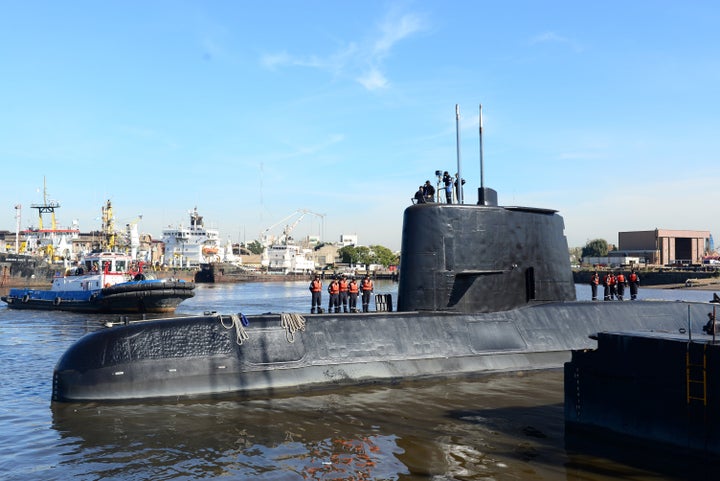Hopes have been dashed once again after a sound detected on Monday in the South Atlantic was deemed not to have come from an Argentine navy submarine with 44 crew, which went missing five days ago.
The craft had oxygen for seven days, meaning those on board have just two more days before it would have to get to the surface to replenish the air supply.
The sound detected by probes had raised hopes that crew members aboard the ARA San Juan submarine, which disappeared after reporting an electrical malfunction, may have been intentionally making noise to attract rescuers.

But an analysis by Argentine authorities, on the fourth day of a search-and-rescue mission, showed that it was highly unlikely it had come from the German-built submarine, navy spokesman Enrique Balbi told reporters in Buenos Aires.
“It does not correspond to a pattern that would be consistent with bangs against the walls in morse code,” Balbi said. He described whatever had been detected as “a continuous, constant sound.”
The disappointment followed another let-down earlier in the day, when the navy said satellite calls detected over the weekend had not come from the vessel.
The vessel reported an electrical problem and was headed back to its base in the port of Mar del Plata when it disappeared on Wednesday, the navy said.
Storms have complicated search efforts as anxious relatives wait for news of their loved ones.

More than a dozen boats and aircraft from Argentina, the United States, Britain, Chile and Brazil have joined the search effort. Authorities have mainly been scanning the sea from the sky, as storms have made it difficult for boats to navigate the waters.
Gabriel Galeazzi, a naval commander, told reporters that the submarine had come up from the depths and reported the unspecified electrical malfunction before it disappeared nearly 300 miles off the coast.
“The submarine surfaced and reported a malfunction, which is why its ground command ordered it to return to its naval base at Mar del Plata,” he said.
The malfunction did not necessarily cause an emergency, Galeazzi added. The craft was navigating normally, underwater, at a speed of five knots toward Mar del Plata when it was last heard from, he said.
“A warship has a lot of backup systems, to allow it to move from one to another when there is a breakdown,” Galeazzi said.
One of the crew is Argentina’s first female submarine officer, Eliana Maria Krawczyk, 35, who joined the navy in 2004 and rose to become the master-at-arms aboard the ARA San Juan.
The families of crew members have gathered at the Mar del Plata naval base awaiting news. They were joined on Monday by President Mauricio Macri.
“We continue to deploy all available national and international resources,” to find the submarine, Macri said on Twitter.
Intermittent satellite communications were detected on Saturday and the government had said they were likely to have come from the submarine. But the ARA San Juan sent its last signal on Wednesday, according to Balbi.
The calls that were detected “did not correspond to the satellite phone of the submarine San Juan,” he said on Monday.
The ARA San Juan was inaugurated in 1983, making it the newest of the three submarines in the navy’s fleet. Built in Germany, it underwent maintenance in 2008 in Argentina.
That maintenance included the replacement of its four diesel engines and its electric propeller engines, according to specialist publication Jane’s Sentinel.
